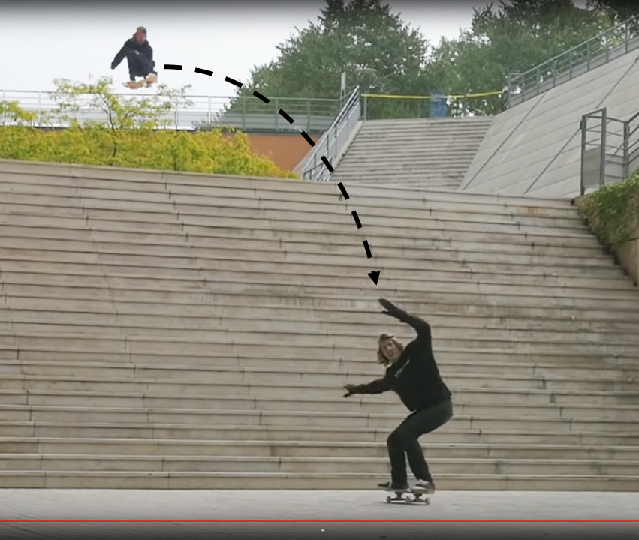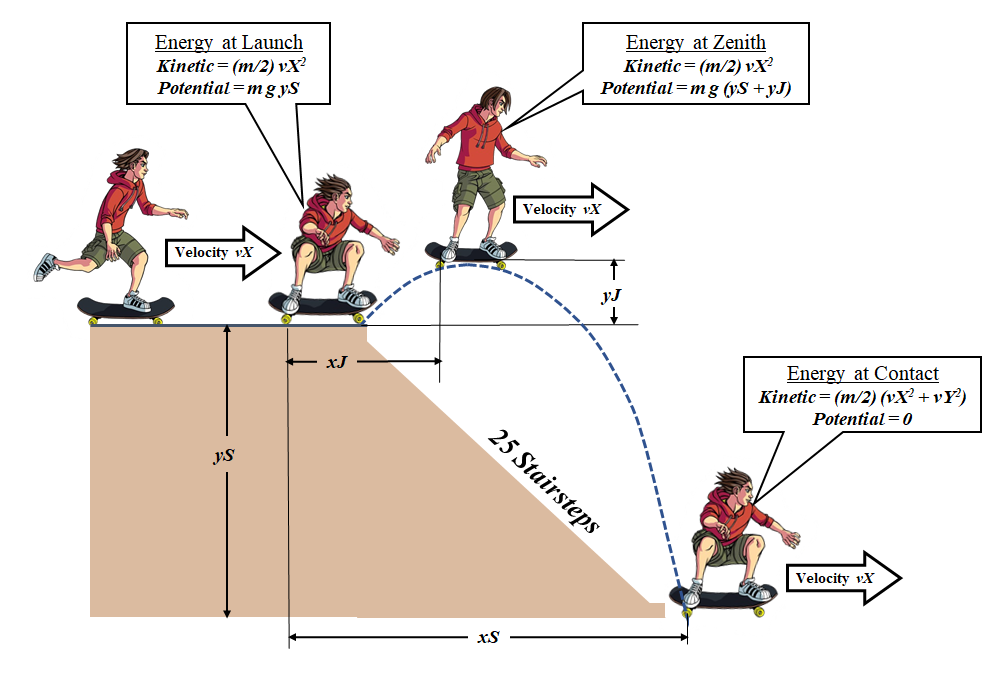|
Skateboard Mystery
Copyright ©2020 by Paul Niquette. All rights reserved.  Aaron “Jaws” Homoki
Completing 25-stair Jump October 9,
2015 Skateboarding tricks are dominated by jumping. Stairways are exceptionally challenging obstacles. Unlike curbs and benches or simple precipices, an outdoor stairway requires the skateboard jumper to cover a long horizontal distance while dropping an immense vertical height. Aaron Homoki's record-setting jump was from a height of 4.5 meters (14 ft 9 in, 7 inches per stair) and over a distance of 6.7 meters (22 ft, 10.6 inches per stair). Referring to the generalized dimensions in the sketch below: yS and xS represent the height and length of the stairs, while yJ and xJ represent the height and length of Homoki's jump above and beyond the top stair.

...and since velocities (vX, vY) are vectors, total velocity = (vX2 + vY2) 1/2 by the Pythagorean Theorem.
Inasmuch as energy can neither be created nor destroyed, Energy at Zenith = Energy at Contact, and the following equation applies to the skateboard trajectory: (m/2) vX2 + m g (yS + yJ) = (m/2) (vX2 +vY2), which can be simplified algebraically to read...Oh, but then, immediately after contact, vY = 0 and thus m g (yS + yJ) = 0. Hmm. The potential energy at zenith seems to have suddenly vanished. Accordingly, here is what one might call the Skateboard Mystery...
|
